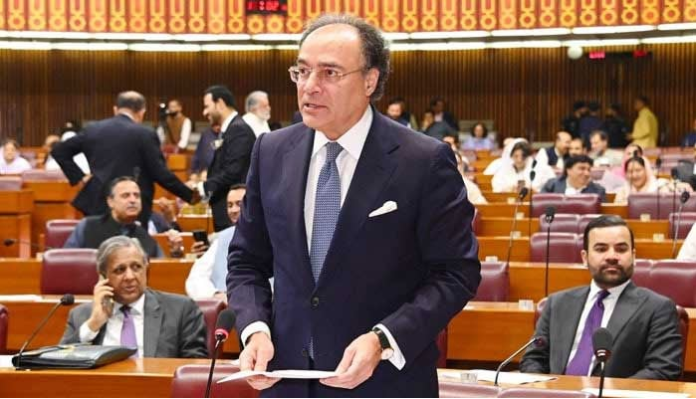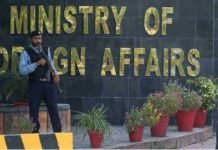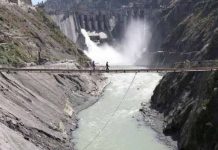ISLAMABAD, JULY 3 (DNA):Budget 2025–26 signals fiscal restraint and modest climate intent but remains, at its core, an act of improvisation rather than coordinated choreography.
Touted as contractionary, the budget sets ambitious targets: fiscal deficit at 3.9% of GDP and a record primary surplus of 2.4%. Yet, these figures rest on a weak foundation. Tax measures remain largely regressive, offering token relief while burdening ordinary citizens.
With increased perks for parliamentarians and stagnancy of development spending, the budget reflects an elitist tilt. Indirect taxation dominates, while key sectors like real estate, retail and agriculture stay undertaxed.
While, the investment climate remains bleak: LSM shrank 1.52% (10MFY25), and public investment is crowded out by soaring debt servicing, pensions, SOE losses and circular debt. Ergo, the economy stays skewed toward rent-seeking and consumption.
Despite easing inflation and improved reserves, these short-term gains mask a crumbling growth foundation. Pakistan ranks 168th out of 193 on the UN HDI and last on the WEF’s Global Gender Gap Report 2025, reflecting deep gender inequality and chronic underinvestment in education, health and well-being.
While fiscal woes dominate headlines and public discourse, Pakistan’s climate vulnerabilities are just as alarming. Ranked as the most vulnerable in 2022, its cities constantly face: air pollution, inadequate drainage, paradox of deluge and drought and heat-island effects.
Per, latest Economic Survey, the year 2024 was recorded as Pakistan’s ninth warmest year in the last 64 years. Further, Pakistan ranks 178th out of 180 on the Global Environmental Performance Index, highlighting severe challenges in air quality, water resources, and
climate action.
Despite this, the fiscal response remains conflicted. Budget 2025–26 embeds climate through a Climate Budget Tagging (CBT) system across 5,000+ federal cost centres, critics argue it often amounts to mere rebranding of existing projects, such as hydropower dams, under a climate label. Mitigation allocations have risen 183%, adaptation by 83% and governance-related spending stands at Rs28.3 billion.
However, these gains are undermined by significant cuts, with disaster preparedness reduced by 30% and pollution abatement slashed by 66%, suggesting a reactive rather than proactive climate strategy. Meanwhile, the Ministry of Climate Change’s budget has been cut from Rs3.5 billion to Rs2.7 billion, and the environment protection allocation halved from Rs7.2 billion to Rs3.1 billion.
Policy contradictions further weaken the impact. A 2.5% carbon levy has been imposed to discourage fossil fuel use, yet without structural reform, it feels like just another burden on the poor. Meanwhile, duties on solar panel imports have been raised, and hybrid and electric vehicles are now taxed.
Most concerning is the continued reliance on fossil fuel revenues; 81% of so-called “green” revenues come from petroleum levies, a glaring fiscal paradox where climate financing depends on carbon-heavy sources. These mixed signals have rightly drawn criticism as “absurd contradictions” that undermine clean energy goals.
The cherry on the top? Globally, the landscape isn’t encouraging either. Multilateralism is eroding. The EU’s Carbon Border Adjustment Mechanism (CBAM), US protectionism and insufficient COP pledges underscore the widening chasm between rhetoric and reality.
The COP29 “Baku to Belem Roadmap to 1.3T” remains aspirational, with only $350 billion pledged out of the $1.3 trillion goal, echoing the broken $100 billion per year commitment of the Paris Agreement. For developing countries like Pakistan, waiting for international financing is both futile and dangerous.
Against this context, it is obvious that it takes two to tango: fiscal repair and climate resilience must move in sync. Treating them as separate policy tracks is outdated. Instead, Pakistan must leverage climate finance as both a developmental and a fiscal tool, rethinking its budget through an integrated green lens.
Here’s how: A well-calibrated carbon levy, beginning at Rs1,500/ton and phasing up to Rs2,500, offers a significant opportunity to mobilise domestic climate finance, potentially generating up to 1.2% of GDP. Unlike the current fragmented framework, this approach could evolve into a hybrid tax-and-trade system by 2030, aligned with emerging regional carbon markets. It balances climate ambition with fiscal pragmatism, enabling scaled investment in renewable energy and low-carbon infrastructure.
Meanwhile, the plastic industry, already contributing over $861 million annually in taxes, presents an avenue for targeted packaging levies. Informed by Kenya’s regulatory experience, such measures could finance recycling systems and public engagement to reduce urban waste at the source.
Energy subsidies, particularly for petroleum and electricity, which account for 87% of Pakistan’s Rs1.037 trillion subsidy budget, require urgent restructuring. With circular debt in the power sector now around Rs2.4 trillion, a gradual shift from universal subsidies to targeted support for vulnerable groups can ease fiscal pressure while promoting energy transition. Parallel investments in public green infrastructure, especially solar and wind in underserved regions, could stimulate green employment and long-term cost savings.
Pakistan’s early success with Green Sukuk issuance signals the potential of Islamic finance as a sustainability vehicle. By modernising the financial architecture and pursuing blended finance strategies, Pakistan can better access the $1.8 trillion global clean energy investment pool.
Nature-based solutions also warrant strategic expansion. Programmes such as Costa Rica’s Payment for Ecosystem Services (PES) model or Pakistan’s own Billion Tree Tsunami could be scaled to fund forest conservation and eco-tourism.
Case studies from Swat’s Miandam Valley reveal how even modest payments can incentivise communities while generating environmental value. Rationalising Rs50 billion to Rs80 billion in agriculture subsidies could also reduce environmental degradation while reallocating resources toward climate-smart practices such as drip irrigation and organic inputs.
With per capita water availability now below 1,000 cubic meters (down from 5,260 in 1951), pricing mechanisms for large-scale users, particularly in the industrial sector, are essential to encourage efficiency and resilience. This is not a revenue strategy; it is a national imperative in the face of increasing climate and water insecurity, especially post-abeyance of IWT.
According to the IMF, 10 low-income countries are in debt distress, 25 are at high risk, and 26 face moderate risk, leaving only seven with low risk. This shows how debt has become a crippling burden for over half of the world’s poorest nations. In developing countries like Pakistan, rising debt is shrinking fiscal space and threatening financial stability. Debt-for-Climate (DFC) swaps offer a potential solution by cancelling or refinancing debt in exchange for climate investments.
For example, in 2023, Ecuador swapped $1.6 billion in debt for a $656 million blue bond to fund marine conservation.
To make these changes real and lasting, Pakistan must implement a set of enabling actions within a coherent fiscal and climate strategy.
First things first: climate budget tagging needs to be watertight, no more dressing up routine development as climate action. Disaster spending must graduate from band-aid relief to resilience-first strategy. As Dr Khalid Waleed has noted in these pages, all carbon levy revenues and a significant share of the petroleum levy should flow directly into the Pakistan Climate Fund, turning climate taxes into climate solutions. Deploy flagship pilots, solar rooftops in underserved areas, e-buses, flood-proof housing, with bulletproof M&E to prove impact and magnetise co-financing.
Next, hardwire climate into the federal architecture. Embed rule-based, climate-linked transfers in the NFC to empower provinces and districts with both funds and know-how. A just transition means future-proofing jobs: rebuilding with flood-resilient infrastructure and retool fossil fuel workers for green gigs, underpinned by social protection.
Scale up climate-smart agriculture, think drip irrigation, resilient seeds and water harvesting to boost yields, cut losses and heal ecosystems. And yes, win hearts and minds: climate levies need public support, so roll out mass awareness and green up the curriculum.
Finally, climate governance is smart and seamless. Create climate budgeting units, activate cross-sector task forces, and plug spending into integrated financial management systems (IFMIS) dashboards for real-time tracking. Green public procurement, weighted for lifecycle emissions and resource efficiency, must guide where the rupee lands.
Build a national carbon registry to unlock future carbon market revenue. Keep performance honest with parliamentary reviews, citizen audits and think tank monitors. And don’t sideline the future, give youth a seat at every table, from policy design to project oversight. Climate credibility depends on it.
The tango between fiscal stability and climate responsibility cannot be danced with one foot. Pakistan’s crisis is twofold, and so must be its solution.

















